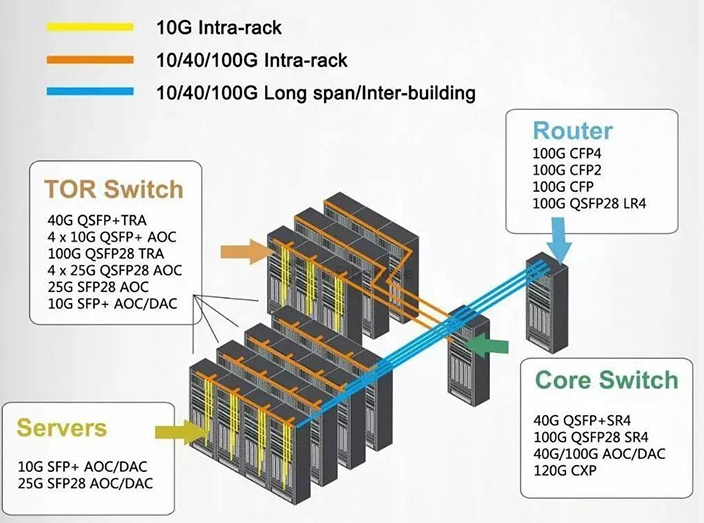
In the era of high-speed transmission of information, optical modules, as the "invisible bridge" in the network equipment, bear the core task of optical and electrical signal conversion. Whether it is home broadband, enterprise server room, or data centre and 5G base station, the performance of the optical module directly determines the speed and stability of the network. The following will be from the packaging type, transmission rate, transmission distance, application scenarios in various dimensions, a comprehensive analysis of the classification of optical modules, to help you easily master the core knowledge of optical modules.
I. Type of encapsulation
The package type of optical module directly affects its support rate, power consumption and applicable equipment, the following is the mainstream package type inventory
1(math.) genusSFP
Features: small hot-swappable, low power consumption
Speed: 1G/2.5G
Applications: enterprise switches, routers

2(math.) genusSFP+
Features: SFP upgraded to support higher speeds
Speed: 10G
Application: Data Centre Access Layer

3(math.) genusQSFP28
Features: four-channel design, high density
Speed: 40G/100G
Application: Data Centre Core Tier

4(math.) genusQSFP-DD
Features: Dual-density design for compatibility
Speed: 400G/800G
Application: hyperscale data centres

5(math.) genusCFP/CFP2
Features: large size, high power
Speed: 100G/400G
Application: Long distance telecommunication transmission

Trivia:QSFP-DDBackwards compatible (compatible) due to support forQSFP28(optical modules), the mainstream choice for next-generation data centres
II. Transmission rate
Optical Module Rate Evolution Tied to Network Requirements
1G/10G: Suitable for enterprise LAN, home gigabit broadband access.
25G/40G: Standard for server access layer in data centres, cost-effective.
100G/400G: Core rates for data centre backbone networks, 5G bearer networks.
800G: New demand spawned by AI arithmetic explosion to support hyperscale AI training clusters.
III. Transmission distance
The transmission distance of an optical module is determined by both the type of fibre (singlemode/multimode) and the wavelength of the light.
1Short distance
Module type: multimode module
Fibre type: multimode fibre
Transmission distance: ≤ 550 metres (e.g. SR4)
Application Scenario: Connection between cabinets in the server room

2Long distance
Module type: single mode module
Fibre type: single mode fibre
Transmission distance: 10-120 kilometres (e.g. LR4)
Application scenarios: metropolitan area network, wide area network

Trivia: Single-mode fibre is costly but has a long transmission distance, multi-mode fibre is suitable for short-distance and high-density scenarios, and you need to avoid mixing them when selecting the type.
Whether you are an enterprise IT administrator or a network engineer, understanding the logic of optical module selection can provide a critical boost to network architecture optimisation

